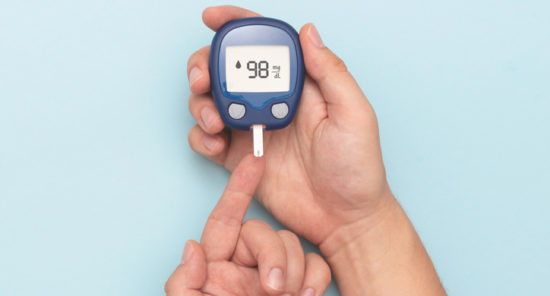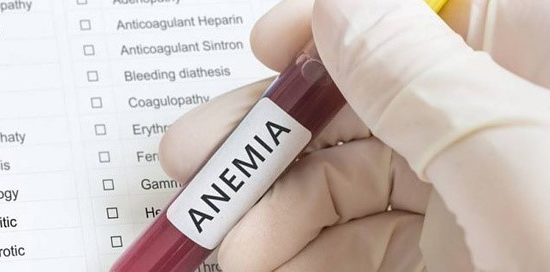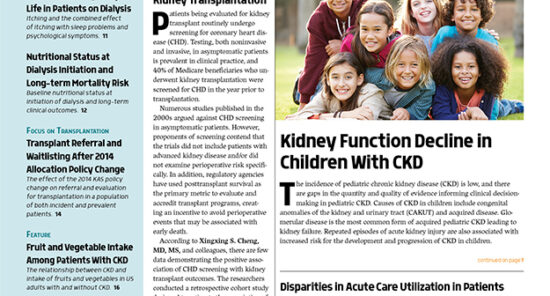Credit: Original article published here.By 2040, chronic kidney disease (CKD) is projected to be one of the top four leading causes of potential years of life lost. CKD is associated with various comorbidities and complications, including secondary hyperparathyroidism (SHPT) and vitamin D insufficiency (VDI). As patients experience decline in kidney function, there are significant alterations in the metabolism of calcium, phosphorus, and vitamin D that cause increased production and secretion of parathyroid hormone (PTH). The combination of decreased kidney function, mineral abnormalities, and high rates of comorbidities are associated with reduced quality of life for many patients. SHPT develops as a result of abnormalities in these parameters. Low levels of serum total 25-hydroxyvitamin D (25D) and 1,25-dihydroxyvitamin D play a major role in the progression of SHPT. Concurrent diagnoses of CKD and SHPT have been linked to increased risk of progression of kidney disease, cardiovascular disease, and mortality. Patients with CKD and SHPT have significantly higher medical costs and use of health care resources compared with patients with CKD alone. Poor vitamin D status and elevated levels of PTH commonly occur in patients with stage 3 to 5 CKD, and can emerge as early as stage 2. Early and sustained
Credit: Original article published here.Sodium-glucose transport protein 2 (SGLT2) inhibitors (SGLT2i), or gliflozins, block SGLT2 cotransporters in the proximal tubules and reduce renal glucose and sodium reabsorption.1 Reduced reabsorption of sodium results in natriuresis, which, through tubuloglomerular feedback, causes a reduction of intraglomerular pressure. SGLT2i have been shown to not only slow kidney progression in patients with chronic kidney disease regardless of diabetes status, but also improve glucose control, reduce the risk of heart failure, and reduce blood pressure, and they do so in a cost-effective manner.2 The use of SGLT2i has been limited despite approval in the United States since 2013 (canagliflozin). One important factor, which research suggests might be a myth, is that underutilization of SGLT2i therapy is due to their high cost or high copayments. Two recent studies have reported on utilization of SGLT2i where cost was not a factor, namely the US Department of Veterans Affairs (VA), where prescriptions are free. The first study by Mahtta et al looked at SGLT2i use in 537,980 patients with atherosclerotic cardiovascular disease (ASCVD) and type 2 diabetes mellitus (T2DM) in 130 VA facilities.3 They reported that approximately 11% of patients were on SGLT2i therapy. Surprisingly, among individuals with an
Credit: Original article published here.There is an association between type 2 diabetes and a higher risk of developing kidney failure. Helena Bleken Østergaard, MD, and colleagues conducted a study designed to develop and validate a decision support tool to aid in estimating the 10-year and lifetime risks among individuals with type 2 diabetes of developing kidney failure. The researchers also sought to examine individual treatment effects of preventive medication in that patient population. Results were reported in the Clinical Journal of the American Society of Nephrology [2022;17(12):1783-1791]. The researchers utilized data from the Swedish National Diabetes Register for 2002-2019 on 707,077 individuals with prevalent and incident type 2 diabetes to develop the prediction algorithm. Kidney failure was defined as the first occurrence of kidney transplantation, long-term dialysis, or persistent estimated glomerular filtration rate <15 mL/min/1.73 m2. Using routinely available predictors, two Cox proportional regression functions for kidney failure and all-cause mortality as respective end points were developed. The functions were combined into life tables to calculate the predicted survival without kidney failure while using all-cause mortality as the competing outcome. A cohort of 256,265 individuals with incident type 2 diabetes from the Scottish Care Information Database between 2004 and 2019
Credit: Original article published here.Management of patients with anemia of chronic kidney disease (CKD) seeks to reduce red blood cell transfusions and avoid complications such as allosensitization. Researchers, led by Vivekanand Jha, MBBS, MD, DM, PhD, conducted an analysis of data on red blood cell transfusion needs in patients with CKD on and not on dialysis in the ASCEND-D and ASCEND-ND trials. Trial participants were treated with daprodustat, a novel hypoxia inducible factor prolyl hydroxylase inhibitor, or with erythropoiesis-stimulating agents (ESAs). Results were reported during a poster session at the National Kidney Foundation Spring Clinical Meetings 2023. The poster was titled The Effects of Daprodustat on Blood Transfusion Rates in the ASCEND-D and -ND Trials. The analysis included data on rates of red blood cell transfusions (events per 100 patient-years) in the ASCEND-D and ASCEND-ND trials and in the ASCEND-D ESA hyporesponder (ESA-HR) subgroup (baseline ESA-resistance index >2.0/>450 U/kg epoetin per week). In prespecified analyses, adjustments in Cox proportional model-estimated hazard ratios (HR) included treatment/region, dialysis type in ASCEND-D participants, and randomization-ESA use in ASCEND-ND trial participants. In both trials, red blood cell transfusions (≥5%) and overall red blood cell transfusion rates were numerically lower in patients in the daprodustat
Credit: Original article published here.According to Jake Hunnicutt, PhD, and colleagues, there are few data on the use of red blood cell transfusion among patients with anemia and nondialysis dependent chronic kidney disease (CKD) in the United States. Data on how the rates of red blood cell transfusion vary by hemoglobin level are also limited. During a poster session at the National Kidney Foundation Spring Clinical Meetings 2023, the researchers presented data on the rate of red blood cell transfusions and associated complications from 2017 to 2019. The poster was titled Red Blood Cell (RBC) Transfusion Use Varies by Baseline Hemoglobin (Hb) and Is Associated With Posttransfusion Hyperkalemia and Hospitalization Within 30 Days in US Patients With Stage 3-5 CKD and Anemia. The retrospective cohort study utilized Optum’s deidentified Integrated Claims-Clinical dataset. Inclusion criteria were hemoglobin measure (index date), prior evidence of stage 3-5 CKD, and anemia (defined as treatment for anemia or baseline hemoglobin <12 g/dL for women or <13 g/dL for men). Analyses were stratified by insurance type (commercial or Medicare Advantage [MA]). Associations between baseline hemoglobin and red blood cell transfusion events within 6 months were quantified using estimated adjusted rate ratios (aRR) and 95% CIs. Claims
Credit: Original article published here.There are limited treatment options to reduce persistent cardiovascular and renal risk in patients with type 2 diabetes and stage 4 chronic kidney disease (CKD). Results of FIDELITY, a prespecified pooled analysis of FIDELIO-DKD (Finerenone in Reducing Kidney Failure and Disease Progression in Diabetic Kidney Disease) and FIGARO-DKD (Finerenone in Reducing Cardiovascular Mortality and Morbidity in Diabetic Kidney Disease) demonstrated that heart-kidney outcomes were improved in participants with CKD and type 2 diabetes who were treated with finerenone. Pantelis Sarafidis, MD, and colleagues conducted a FIDELITY subgroup analysis to examine the effects of finerenone among participants with stage 4 CKD (defined as estimated glomerular filtration rate [eGFR] <30 mL/min/1.73 m2). Efficacy outcomes of interest were a cardiovascular composite (cardiovascular death, nonfatal myocardial infarction, nonfatal stroke, or hospitalization for heart failure) and a kidney composite (kidney failure, sustained ≥57% decrease in eGFR from baseline, or kidney disease death). Results were reported online in the Clinical Journal of the American Society of Nephrology [doi:10.2215/CJN.0000000000000149]. FIDELITY included 13,023 participants. Of those, 7% (n=890) had stage 4 CKD. The hazard ratio for risk of the cardiovascular composite outcome with finerenone versus placebo among participants with stage 4 CKD was 0.78
Credit: Original article published here.There is an association between nutritional status and survival among patients on dialysis. However, according to Sara Blumberg Benyamini, PhD, and colleagues, available data focus on patients who have undergone hemodialysis treatment for a minimum of 8 weeks. There are only limited data on the association between clinical outcome and baseline nutritional status at initiation of dialysis and any changes following dialysis initiation. The researchers conducted a retrospective observational study to examine how baseline nutritional status at the time of dialysis initiation, and the improvement or worsening of nutritional status during the first 3 months of dialysis treatments, affect survival for up to 5 years following the start of renal replacement therapy. Results were reported in the Journal of Renal Nutrition [2022;32(6):758-765]. During the study period of March 1, 2009, to March 1, 2019, 299 patients initiated hemodialysis at the Nephrology and Hypertension Department at the E. Wolfson Medical Center, Holon, Israel. Of those, 287 patients had data on initial nutritional score and first 3 months of nutritional score available. Nutritional status was determined using the Integrative Clinical Nutrition Dialysis Score (ICNDS) that is based on biochemical assessment of albumin, creatinine, urea, cholesterol, dialysis adequacy, C-reactive
Credit: Original article published here.Chronic kidney disease (CKD) affects approximately 13% of the population of the United States. Many patients adhere to preventive dietary patterns; however, according to Shirin Pourafshar, PhD, MSCR, RDN, and colleagues, empiric evidence to guide use of such measures is limited. Current dietary guidelines for patients with CKD focus on recommended nutrient intakes (sodium, potassium, and phosphorous) rather than on whole foods such as fruits and vegetables. Patients with CKD at risk for hyperkalemia limit intake of fruits and vegetables to avoid excess dietary potassium intake. Patients with mild-to-moderate CKD do not face a high risk of hyperkalemia, and restriction of dietary potassium may lower consumption of healthy foods such as fruits and vegetables. The 2000 update to the Clinical Practice Guideline for Nutrition in CKD from the National Kidney Foundation and the Academy of Nutrition and Dietetics includes the need for further evidence on food patterns and intake of fruits and vegetables in patients with CKD. Dr. Pourafshar et al conducted a study to examine the relationship between CKD and intake of fruits and vegetables in US adults with and without CKD. Results were reported in the Journal of Renal Nutrition [2023;33(1):88-96]. The researchers characterized
Credit: Original article published here.The incidence of pediatric chronic kidney disease (CKD) is low, and there are gaps in the quantity and quality of evidence informing clinical decision-making in pediatric CKD. Causes of CKD in children include congenital anomalies of the kidney and urinary tract (CAKUT) and acquired disease. Glomerular disease is the most common form of acquired pediatric CKD leading to kidney failure. Repeated episodes of acute kidney injury are also associated with increased risk for the development and progression of CKD in children. The most comprehensive data on the progression of CKD in children are from the Chronic Kidney Disease in Children (CKiD) study, an ongoing prospective cohort study that has enrolled more than 1000 children over three recruitment waves. According to Caroline A. Gluck, MD, and colleagues, CKiD data are limited by the relatively small sample size. The researchers conducted a study utilizing electronic heath record (EHR) data from a national multicenter pediatric network in the United States to identify a large cohort of children with CKD. The retrospective cohort study was designed to evaluate progression of CKD in the pediatric population and examine clinical risk factors for decline in kidney function. Results of the study were
Credit: Original article published here.In the population of patients with chronic kidney disease (CKD), particularly those with diabetes as the underlying cause of CKD, cardiovascular disease is a major cause of morbidity and mortality. While diabetic kidney disease (DKD) and cardiovascular disease have some risk factors in common, the pathogenesis of cardiovascular disease in the context of DKD is not completely understood, compounded by a lack of accurate biomarkers associated with cardiovascular outcomes in patients with DKD. Compared with the general population, the association between the traditional risk factors for cardiovascular disease (age, sex, diabetes, duration, total cholesterol, high-density lipoprotein cholesterol, smoking, systolic blood pressure, hypertensive therapy) is not as strong in patients with CKD. The uremic solutes trimethylamine-N-oxide (TMAO) and asymmetric and symmetric dimethylarginine (ADMA, SDMA) have been linked to cardiovascular disease in kidney failure with kidney replacement therapy (KFRT), but there are limited data in populations with diabetes and less severe kidney disease. Hima Sapa, PhD, and colleagues assayed plasma and urine for ADMA, SDMA, and TMAO in a random subcohort of participants with diabetes and baseline estimated glomerular filtration rate (eGFR) <60 mL/min/1.73 m2 from the REGARDS (Reasons for Geographic and Racial Differences in Stroke) cohort study.










